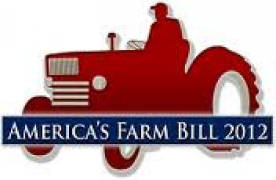 About every five years a new farm bill gets passed without much of the U.S. population knowing what happened. The truth is that the farm bill is rather secretive, and this year it keeps getting suggested they are going to secretly pass it. This is because now many groups are opposing the farm bill and what it currently stands for. The U.S. began passing ‘Farm Bills’ in 1933. This legislation was first created because of the depression, and it was meant to be temporary. The first farm bill passed encouraged farmers to not plant part of their land in order to reduce surplus and make grain more valuable. In turn, the bill made sure the price of grain was not driven down by over production and farmers were making enough money to not be in debt and have to stop farming.
About every five years a new farm bill gets passed without much of the U.S. population knowing what happened. The truth is that the farm bill is rather secretive, and this year it keeps getting suggested they are going to secretly pass it. This is because now many groups are opposing the farm bill and what it currently stands for. The U.S. began passing ‘Farm Bills’ in 1933. This legislation was first created because of the depression, and it was meant to be temporary. The first farm bill passed encouraged farmers to not plant part of their land in order to reduce surplus and make grain more valuable. In turn, the bill made sure the price of grain was not driven down by over production and farmers were making enough money to not be in debt and have to stop farming.
It is funny this was the reason for the first farm bill, and now current farm bills are causing this exact issue. One reason we have corn (high fructose corn syrup, maltodextrin, etc.) and soy (soybean oil, soy lecithin, etc.) in every processed food product is because we have a surplus of it, it is extremely cheap to buy, and it has to go somewhere. It is also why all of our commercial livestock is fed corn instead of grass or hay, what their bodies actually need (this alone has caused many health issues for the animals and ourselves). The following video is from Nourish.
We have this surplus because current farm bills are giving subsidies to produce these crops over others. In 2000, $24.7 billion was spent on subsidies. If this was originally meant to be temporary, why is it still occurring? It is obviously not sustainable. Now farmers are only planting what they will get paid for by a subsidy, and even that is not enough for them to get by. By only planting what subsidies will pay for, most subsidies are paid to farmers to grow wheat, corn, soybeans, rice, and cotton. A result of the farm bill and these subsidies is that monocultures of these crops are formed. This makes our agricultural system weak and less sustainable. If one super bug crops up, an entire crop can be wiped out. This can and will cause major issues with food shortages. Obviously changes need to be made in order to sustain our food system.
So what can we do to change the farm bill and help make our food system more sustainable? Nourish recommends the following actions.
- Call. Take 30 seconds to call leaders of the House and Senate agriculture committees and say NO to the “Secret Farm Bill.” Over 27,000 people have done so already using the Food Democracy Now call script. You can also support the development of local and regional farms, farmers, and retail markets by asking your two senators and your representative to co-sponsor the Local Farms, Food, and Jobs Act.
- Meet. To date, there are over 7,000 farmers markets nationwide. Get to know your local farmers. Listen to their stories. Ask them questions about the Farm Bill. The more you understand about the challenges that small-scale farmers face, the larger your role can be in supporting their farms and marketplaces.
- Explore. Find out about programs intended for inclusion in the 2012 Farm Bill. Learn about the new Beginning Farmer and Rancher Opportunity Act, which supports novice farmers by creating jobs, affordable farmland, and farmer training programs. Or read about the pre-existing Wetlands Reserve Program, which has improved watershed health and secured protection and restoration for 11,000 private landowners on 2.3 million acres of land over the past 20 years.
- Review. Learn a brief history of the Farm Bill to understand key programs like the Supplemental Nutrition Assistance Program (SNAP), which currently represents more than two-thirds of the Farm Bill funding and faces multibillion-dollar cuts.

